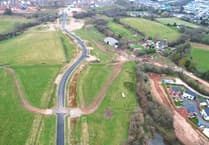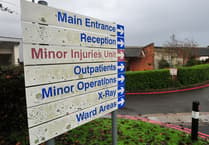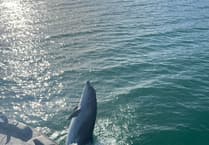A GROUND-BREAKING project to stabilised cliffs between Dawlish and Holcombe has won a top award.
The £32million Network Rail scheme was commended by judges in the Institution of Civil Engineering Awards 2025.
The Dawlish to Holcombe Cliff Stabilisation project won the Over £10m Re-engineered Award.
The project forms part of the South West Rail Resilience Programme and impressed the judges with the scale and complexity of the challenge to secure 1.2km of steep cliffs, prone to landslide.
The pioneering approach used on the scheme to protect Devon’s main rail link to London could now be used on other similar cliffs across the UK.
The project involved stabilising steep, geologically sensitive coastal cliffs above the main railway line between Dawlish and Holcombe to safeguard the vital transport link.
The cliffs were divided into nine ‘behavioural units’ and soil nails, totalling 60km in length were installed in the cliffs along with 21,000 sq m of cliff netting.
Working in a harsh marine environment, teams used rope-access drilling on the vertical faces up to 40m high with up to 18 cliff mounted rigs operating simultaneously.
A key innovation was the development of a new combination bar solutions which reduced embodied carbon and save more than £7million allowing the full scope to be delivered despite inflationary pressures
Remarkably the works were completed without disrupting rail services even during one of the wettest winters on record.
The project, by contractors BAM Nuttall, Tony Gee and Partners working with Network Rail, has helped protect local homes, supported 250 jobs and included a skills development programme for local college students.
It now provides a 100 year design life ensuring long term resilience.
Judges said: 'The project offered a pioneering approach to resilience work that has the potential to influence similar projects across the country.
‘It embodied innovation, fresh thinking and collaboration at its core while tackling complex challenges with agility, strong community engagement and effective teamwork.’





Comments
This article has no comments yet. Be the first to leave a comment.